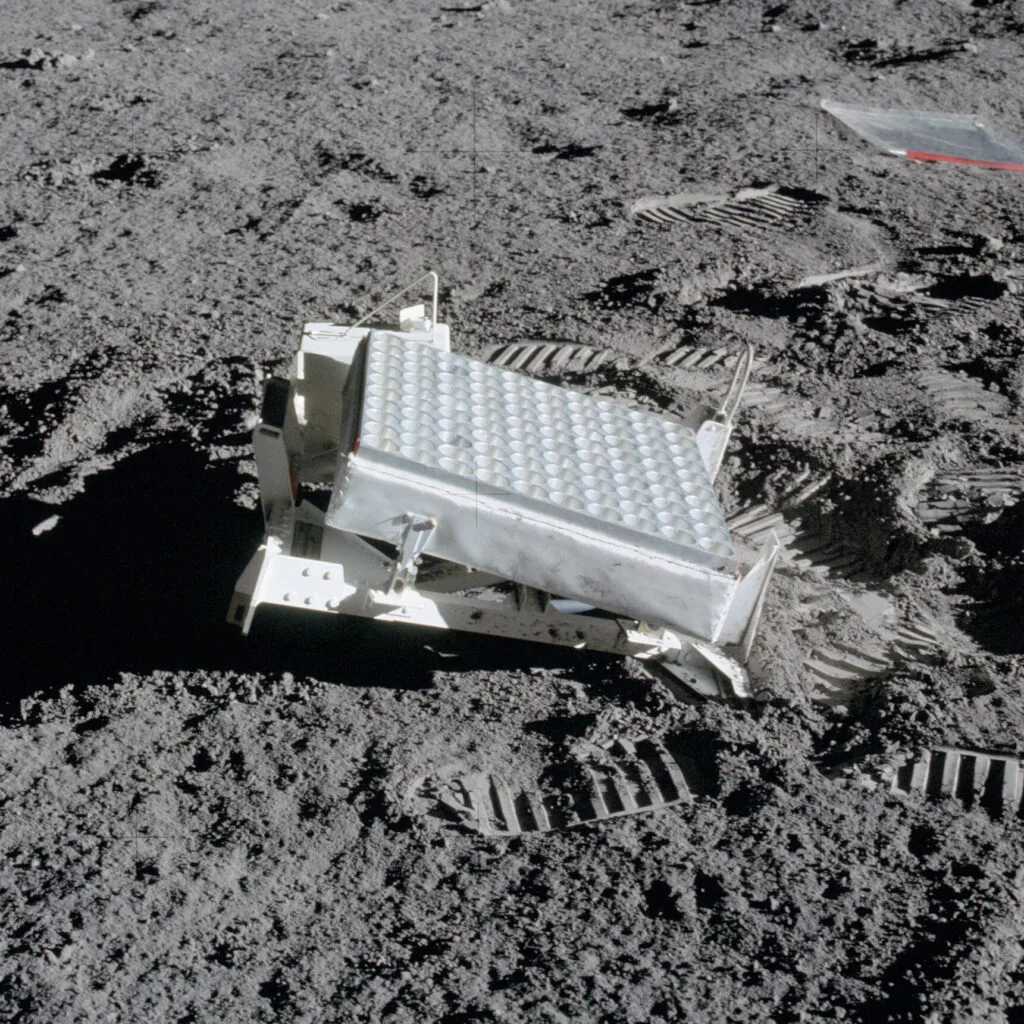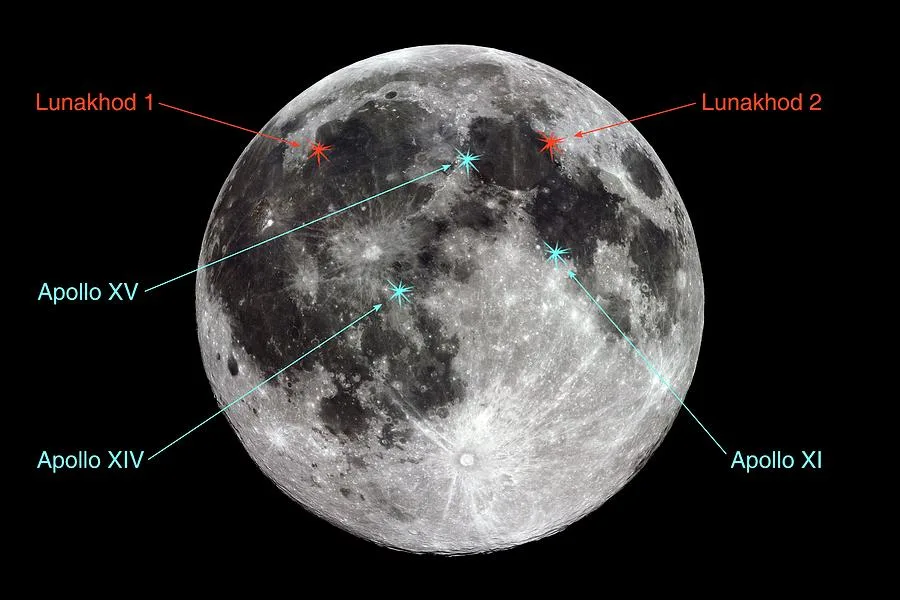Every argument suggesting that NASA faked the Moon landings has been thoroughly debunked.
Yet, even half a century later, people continue to discuss conspiracy theories—whether online, on TV shows, or even over dinner.

Moon fact: With a high-powered amateur telescope, you can view the Apollo landing sites, and if you examine photos from the Lunar Reconnaissance Orbiter, you can see remnants of the Apollo missions for yourself.
Were the Moon landings faked?
If you’re drawn into a debate about whether humankind first set foot on the Moon on July 20, 1969, you may find yourself underprepared. Most people believe it’s almost inconceivable that the U.S. government, NASA, 12 astronauts who walked on the Moon, and the 400,000 individuals who worked on the Apollo program would have the motive or means to fabricate one of humanity’s greatest achievements.
Still, some insist the Moon landings were a hoax. They argue that the U.S. staged the Apollo missions to deliver a strategic blow to the USSR in the Space Race, secure more funding for NASA, or divert attention from the Vietnam War. Supporters of these theories rely on supposed evidence that the landings were fabricated.
Often, they cite anomalies in images or videos to bolster their claims. If someone presents these oddities as proof, how do you respond? Below are common arguments made by conspiracy theorists—and why they don’t hold up.


Photographic Evidence
One popular claim is that Apollo photos never show stars. Without Earth’s light pollution and atmosphere, one might expect the astronauts’ images to display a sky filled with stars. However, this argument fails because the photos were taken during the lunar daytime. All manned Moon missions occurred when sunlight was bright, washing out starlight, which was too dim to appear in the images.
Another claim involves the crosshairs seen in many Apollo photos. Critics argue that these markings sometimes seem to be behind objects, implying the photos were doctored. In reality, tests have demonstrated that bright objects in the images can obscure the crosshairs, which may appear faint or even disappear when the images are scanned or copied.
A further anomaly concerns a photo from the Apollo 16 mission, showing a Moon rock with what appears to be a “C” on it, resembling a prop from a movie set. However, analysis of the original photo shows no such marking. The “C” was likely a stray piece of hair or thread introduced during the photo’s reproduction process.
Other arguments misinterpret NASA equipment and lunar physics. For instance, some point to the American flag planted by Neil Armstrong and Buzz Aldrin, which seems to flutter as if in the wind. How could this occur when the Moon has no atmosphere? In fact, the flag isn’t fluttering. A horizontal rod holds it upright, creating the appearance of movement. The weak lunar gravity also prevents the flag from fully straightening, and the apparent fluttering happened only as the astronauts planted it. Since then, the flags have remained stationary.
Fried by Radiation
The most compelling argument for some skeptics concerns the Van Allen belts—two doughnut-shaped regions of charged particles surrounding Earth. Critics argue that humans couldn’t pass through these belts without receiving fatal radiation doses.
This was a legitimate concern during the Apollo planning stages, which is why precautions were taken. The spacecraft had an aluminum shell to shield the astronauts, and the mission’s trajectory minimized their time in the belts.
Radiation readings from the nine Apollo missions that reached the Moon showed an average exposure of 0.46 rads. This level is about ten times higher than what medical professionals working with X-rays experience but is still far below lethal levels.
Proof We Walked on the Moon
Until we return to the Moon, anomalies and oddities in records may continue to inspire new conspiracy theories. However, the vast quantity and diversity of evidence from the Apollo missions overwhelmingly prove these claims wrong.
The Apollo program produced 8,400 publicly available photos, thousands of hours of video footage, a wealth of scientific data, and transcripts of every air-to-ground conversation. The 382 kilograms of Moon rock brought back have been independently verified as lunar by laboratories worldwide, dismissing any notion of a U.S. conspiracy.
If skeptics need more proof, NASA’s Lunar Reconnaissance Orbiter (LRO) offers additional evidence. The LRO has captured high-resolution images of the Apollo landing sites, including descent modules, rovers, and even the astronauts’ footprints. Spacecraft from China, India, and Japan have also identified these sites, providing further independent confirmation.
Finally, a compelling piece of evidence is an instrument installed during Apollo 11: the lunar laser ranging retroreflector array. Still operational today, this device reflects lasers from Earth, allowing precise measurements of the Moon’s distance. Such an achievement would be impossible without visiting the Moon.


